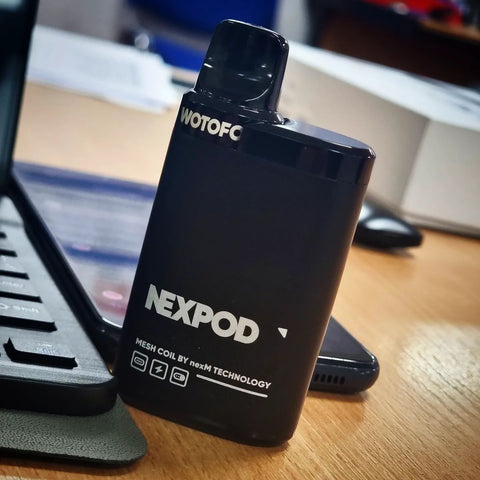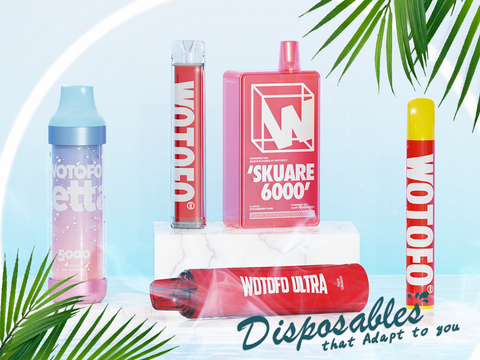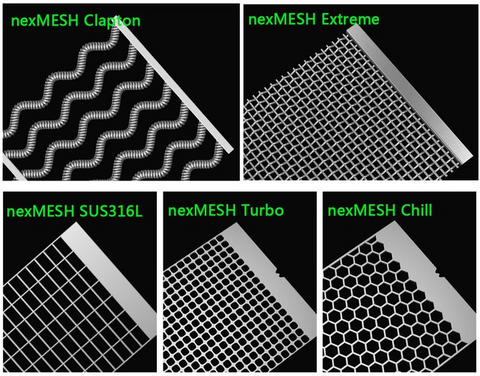Mesh heating element has been said to be the unshaken trend in vaping, even for RDA category.
Oct 22 2019 0 Comments
Answers to 7 Most Common Questions on Mesh RDAs
With the release of our mesh style RDA, the Profile RDA, a new wave of questions about mesh heating elements and mesh RDAs emerged. Here we listed the most common questions we received on one page for easy references and honestly answered these questions without bias.
Q: Why mesh? What’s the advantage of mesh heating elements?
A: The original mesh concept dates back to the days when mesh was the wicking material. Back then, mesh already gained its good reputation of great flavor. As vape evolves, cotton wick was perceived the best wick, but people found that when mesh and cotton were mixed together, it wicks quicker and lasts longer than wire coil builds. That’s where mesh coil comes in. It does very well on flavor production, especially for fruit flavored e-juices.
Q: Mesh RDAs have been on the market for a while now, so how one-of-a-kind is the Profile RDA?
A: Previous mesh RDAs use meshes woven with strands of heating wires, but for the Profile RDA, we paired it with a perforated metal sheet in Kanthal A1 material. Such coil structure with little holes evenly punched on a single sheet can provide larger contact surface, making vaporization more efficient. It heats rapidly and has a longer life span. Yet the uniqueness is that when such mesh paired with the Profile RDA, it breaks down the mixed flavor of your eliquid into separate taste sensation.
Q: Is mesh easy to build?
A: Mesh heating elements may seem to be hard to use, but that’s when you’re not told the right way to do it. To make the building process the easiest you can have, we standardized the size of the mesh coil sheets we provide and include a bending tool to perfectly shape the mesh, making sure it curves evenly with the right angle and width. It’s a breeze to build and rebuild.
Q: One of the pains in using mesh RDAs is the dry hit problem, so how does the Profile solve it?
A: The reason that dry hits happened on mesh RDAs is that saturated cotton falls down by gravity to leave a gap between the cotton and the mesh. The Profile RDA solves the problem by adding a spring-loaded ceramic support. With subtle self-adjustment of the spring, the ceramic support is very sensitive to hold up the soaked cotton to effectively make contact with the heating mesh.
Q: Vapers now all care about the number of puffs on RDAs, what about the Profile?
A: The Profile is structured to house more wick in a small space and hold more eliquid than others. It can last for up to 30 puffs at 75W before needing to resaturate the wick when using pancake wicking method.
Q: What is the proper way to dry burn a mesh coil? Is it the same as a wire coil?
A: Fire the coil sheet at a lower wattage, somewhere between 15W and 20W is what we recommend. Check if it heats evenly, then use the thinner end of the bending tool to adjust the coil sheet. Do pay attention to the wattage you set for the dry burning process, because for any type of mesh coils, it is better to do the dry burning at a lower wattage.
Q: Is it easy to get replacement accessories?
A: All accessories, including mesh style coil sheets, agleted cotton, drip tips, and Profile 22mm conversion caps are available at most local shops globally or at our official website. The 22mm conversion cap is for diversification consideration, giving a different choice on appearance and material.
What other questions do you have?
We’re glad to answer any questions you’d like to ask.
Leave a message to support@wotofo.com to let us know your concerns!
LEAVE A COMMENT
0 Comments





Leave a Comment